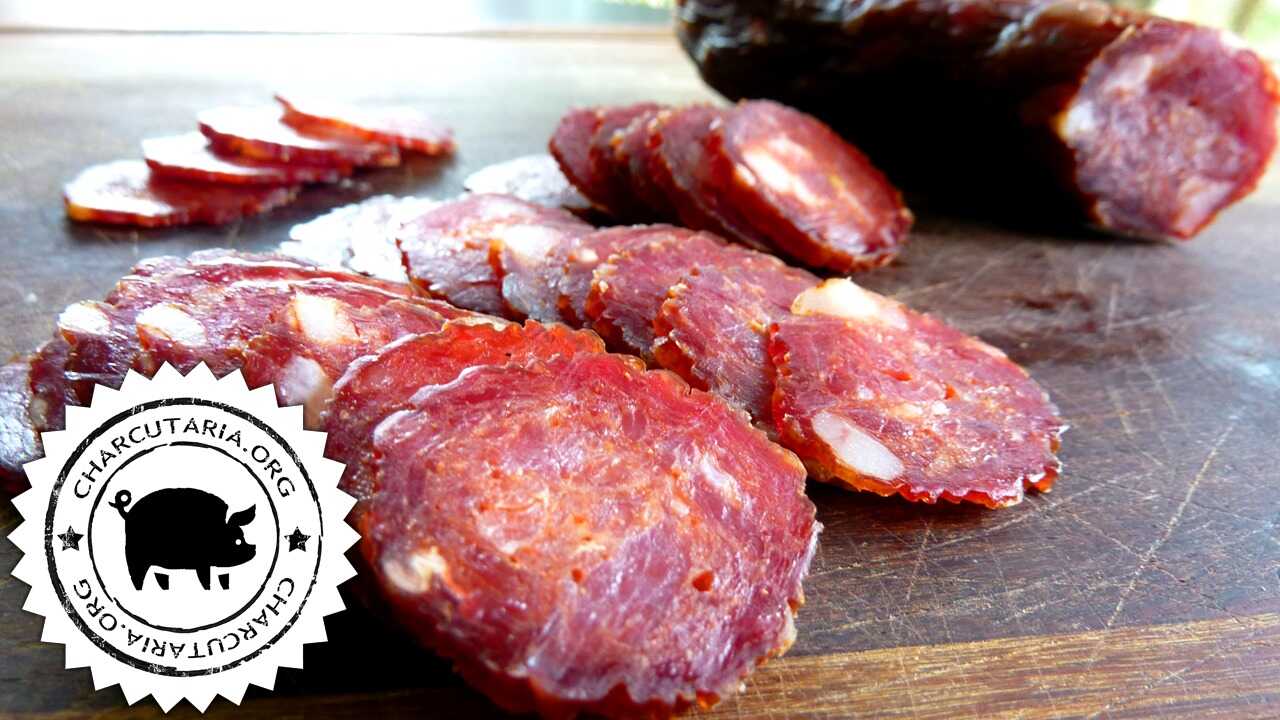
Peperone(ou pepperoni) é um embutido com condimentação forte e processo de produção bem parecido com o salame. É um produto que data da época romana, amplamente produzida nos Estados Unidos em virtude de sua enorme utilização em pizzas. Como é produzido em larga escala nos EUA, a versão mais conhecida é uma imitação distante do peperone romano original. O peperone verdadeiro, cujo nome significa pimenta grande ou pimentão, é um salame magro, picante e muito condimentado. A carne geralmente usada é a bovina, mas a carne suína também pode ser utilizada e ajuda a harmonizar o sabor do produto.
Definição e classificação comercial do Peperone
Peperone é o produto cárneo industrializado, elaborado com carnes suínas e/ou bovinas, toucinho, adicionado de ingredientes, com granulometria média entre 3 e 6 mm, embutido em envoltórios naturais ou artificiais, apimentado, curado, fermentado, maturado, dessecado por tempo indicado pelo processo de fabricação, defumado ou não.
Ingredientes do Peperone Artesanal
750g carne bovina
750g pernil suíno
27g sal = 1,8%
4g sal de cura 2 (6% de nitrito, 3% de nitrato e 93,75% de sal)
4g antioxidante (com eritorbato de sódio)
1g cultura starter (bactérias láticas)
6g pimenta caiena
1g pimenta jamaica
1g semente de erva doce
20g açúcar
10g páprica doce
2g páprica picante
30ml vinho tinto
Preparo do Peperone Artesanal
1) Moa as carnes e a gordura ou, caso não tenha moedor, corte finamente com uma faca.
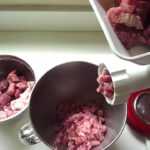
2) Dissolva a cultura starter em um copo de água filtrada e misture bem.
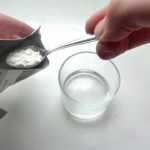
3) Adicione todos os condimentos, a cultura starter dissolvida e os aditivos à carne moída e bata com a pá plana de uma batedeira orbital ou misture bem com as mãos até que a massa do peperone esteja bem pegajosa, grudenta. É importante que a massa esteja bem pegajosa para que seja criada a liga que mantém o produto mais compacto, firme. Geralmente é preciso bater ou misturar por aproximadamente 2 minutos em velocidade baixa para que todos os ingredientes por aproximadamente 2 minutos.
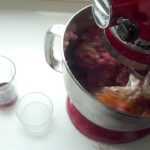
4) Encha a mistura na tripa de colágeno – utilizamos a tripa de colágeno calibre 45mm – ou a tripa natural bovina. Enrole com espaçamento de 25 a 30 centímetros e prenda as pontas com barbante ou grampo. Usando um alfinete ou agulha estéril, fure a tripa para remover bolsas de ar e facilitar a secagem.
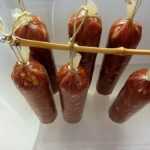
Maturação e Cura por secagem do Peperone
Caso tenha acrescentado a cultura starter pode deixar em temperatura ambiente, ideal 25 graus, durante 48 a 72 horas para que ocorra o processo de proliferação das bactérias adicionadas. As bactérias benéficas vão produzir ácido láctico, além de colaborar com ações enzimáticas, lipolítica e proteolíticas que geram aromas e sabores diferenciados ao produto.
Por questões de segurança, recomendo a leitura do post sal de cura o que é e quanto usar. Nele encontrará informações relevantes sobre cura, acidez e prevenção contra o botulismo.
Pendure e deixe curar/secar em temperatura próxima a 14°C com 70% a 80% de umidade até que o peperone perca entre 30% e 40% do seu peso inicial. Quanto mais peso perder mais firme e intenso o sabor ficará. Em condições corretas o peperone perderá o peso ideal em aproximadamente 20 dias, dependendo da tripa e calibre.
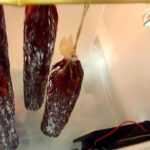
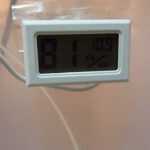
Se o ambiente estiver muito seco, a parte mais externa do peperone vai secar demais e criar uma “casca” escurecida e rígida que impedirá que o interior perca umidade. Provavelmente não perderá o produto, mas o centro nunca secará corretamente, por isso mantenha sempre uma boa umidade. O ideal é que o ambiente mantenha uma umidade mínima de 70%.
Utilizei uma caixa plástica dentro da geladeira para manter a temperatura baixa e a umidade alta. A geladeira costuma ser muito seca e a caixa consegue prender a umidade interna. Para saber mais sobre a solução da caixa plástica, veja o vídeo abaixo. Outro bom ambiente para maturar o salame é uma mini adega de vinhos com controle de temperatura e circulação de ar integrados.
Caixa plástica para fazer salame na geladeira
Vídeo do Peperone Artesanal
Resultado do Peperone Artesanal
Ficou excelente, muito saboroso e picante, mas não exageradamente picante. É possível comer algumas fatias antes de começar a sentir a língua ardendo moderadamente. A erva doce deu um contraste muito bom e a mistura de carnes meioa a meio deu muito certo. Recomendo que testem a receita!
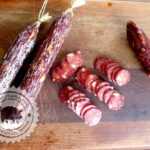
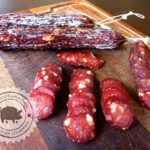
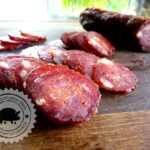
-
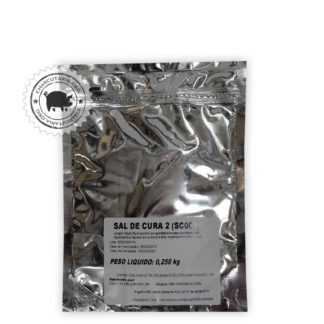 Sal de cura 2R$ 8,00
Sal de cura 2R$ 8,00 -
 Sal de cura 1R$ 8,00
Sal de cura 1R$ 8,00 -
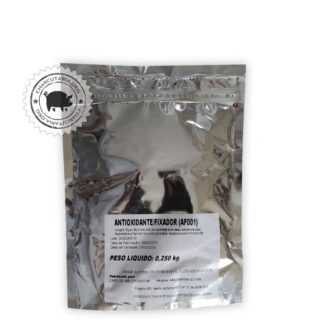 Antioxidante FixadorR$ 23,00
Antioxidante FixadorR$ 23,00 -
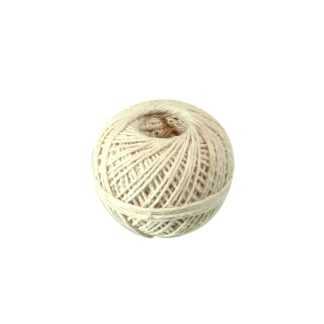 Barbante culinárioR$ 7,90
Barbante culinárioR$ 7,90 -
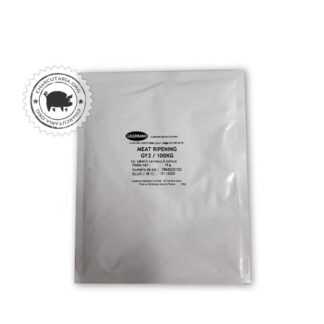 Cultura StarterO preço original era: R$ 69,90.R$ 59,90O preço atual é: R$ 59,90.
Cultura StarterO preço original era: R$ 69,90.R$ 59,90O preço atual é: R$ 59,90. -
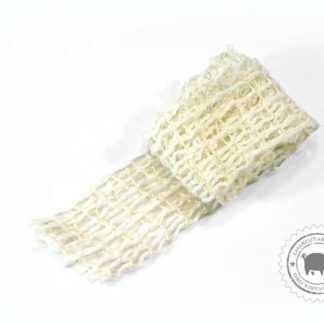 Rede elástica culinária 50mmR$ 15,00
Rede elástica culinária 50mmR$ 15,00 -
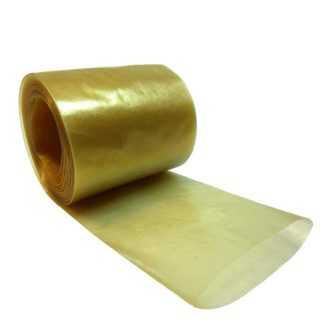 Tripa de colágeno 45mm rolo 5 metros salameR$ 25,00
Tripa de colágeno 45mm rolo 5 metros salameR$ 25,00 -
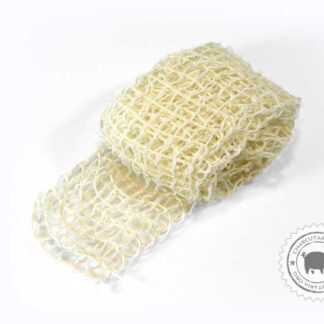 Rede elástica culinária 65mmR$ 18,00
Rede elástica culinária 65mmR$ 18,00 -
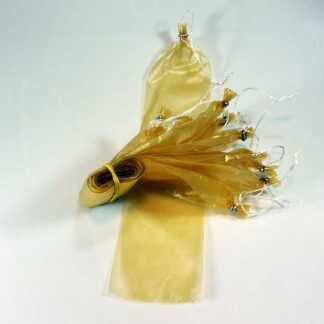 Tripa de colágeno salame 45mm 10 unidades amarradasR$ 22,00
Tripa de colágeno salame 45mm 10 unidades amarradasR$ 22,00 -
 Tripa de colágeno 80mm copa e salameR$ 29,90
Tripa de colágeno 80mm copa e salameR$ 29,90 -
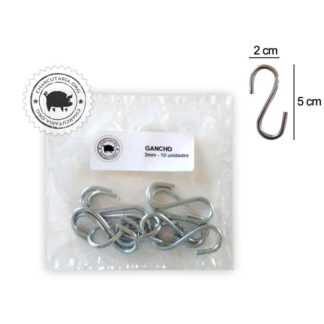 Gancho GalvanizadoR$ 12,00
Gancho GalvanizadoR$ 12,00 -
 Tripa de colágeno salame 50mm 10 unidades amarradasR$ 24,00
Tripa de colágeno salame 50mm 10 unidades amarradasR$ 24,00


Oi bom dia. Obrigado pelo conteúdo. Uma dúvida: em qual momento você colocou o bolor pennicilium? Outra: como o colocou? Obrigado!
Oi Thiago. A cultura mofo/bolor penicilium já estava presente na caixa pois borrifei em outros produtos que fiz antes deste peperone. Esse tipo de cultura fica “impregnada” no ambiente e passa para os produtos seguintes, só é necessário reforçar a aplicação de tempos em tempos. A cultura mofo penicilium é aplicada no exterior do produto, na tripa após o produto já ter sido embutido, e também na câmara. Pode borrifar, esfregar com as mãos ou imergir os produtos na cultura dissolvida em água. Veja nesta cultura que há uma explicação de uso: https://charcutaria.org/produto/cultura-mofo-mold-penicillium-nalgiovense/
Olá, nessa receita você utilizou qual corte bovino ?
Duas perguntas
1- Eu preciso borrifar água na caixa antes de colocar os peperones?
2- Na adega eu posso colocar os peperones deitados ao invés de pendurados?
1) não precisa borrifar água. Acrescente potes com água caso a umidade esteja muito baixa.
2) Nas grades vazadas pode colocar deitado sim
Bom dia Eduardo:
Muito bom e orientativo o seu vídeo. por gentileza duas questões:
a) onde encontro esta ventoinha e qual a especificação ou característica dela? não deu para ver no vídeo. ou onde é utilizada esta ventoinha? em computadores?
b) o Sal de cura 2, existem muitos comentários sobre ser prejudicial a saúde, qual sua opinião? ou está relacionado a quantidade utilizada?
agradeço pela sua atenção.
Oi Carlos Alberto.
a) onde encontro esta ventoinha e qual a especificação ou característica dela? não deu para ver no vídeo. ou onde é utilizada esta ventoinha? em computadores?
É uma ventoinha de computador 12V ligada a uma fonte 9V. Lojas de informática vendem, inclusive online. Pesquise por “cooler fan gabinete pc”.
b) O sal de cura só pode ser relacionado a algum risco quando há residual no produto final e em grande quantidade. Na quantidade recomendada na receita muito provavelmente todo o nitrito será convertido durante o processo e não haverá aditivo residual para ser consumido. O que ocorre é que muitos produtos industrializados utilizam o aditivo em excesso e isso sim pode estar relacionado a riscos.
Espero ter ajudado!
Não vi na receita a quantidade de gordura , ou não usa, somente carne ? Obrigado
Foi usada apenas a gordura já presente nas carnes. Se preferir pode substituir 20% da carne bovina ou do pernil por barriga/toucinho moído.
Gostaria de saber, se usando a cultura dentro da caixa plástica, pode ocorrer de contaminar outros produtos da geladeira ?
Oi Thiago. A cultura pode proliferar sim, mas ela é benéfica, é uma bactéria inofensiva assim como as que estão em diversos derivados lácteos como queijos, iogurtes, probióticos, yakult ou até mesmo aquelas que fazem os pães crescerem. Estão espalhadas por todo o meio e não nos trazem qualquer malefício. Há até remédios com cepas de culturas bacterianas que ingerimos para auxiliar nos processos digestivos, a famosa flora intestinal.